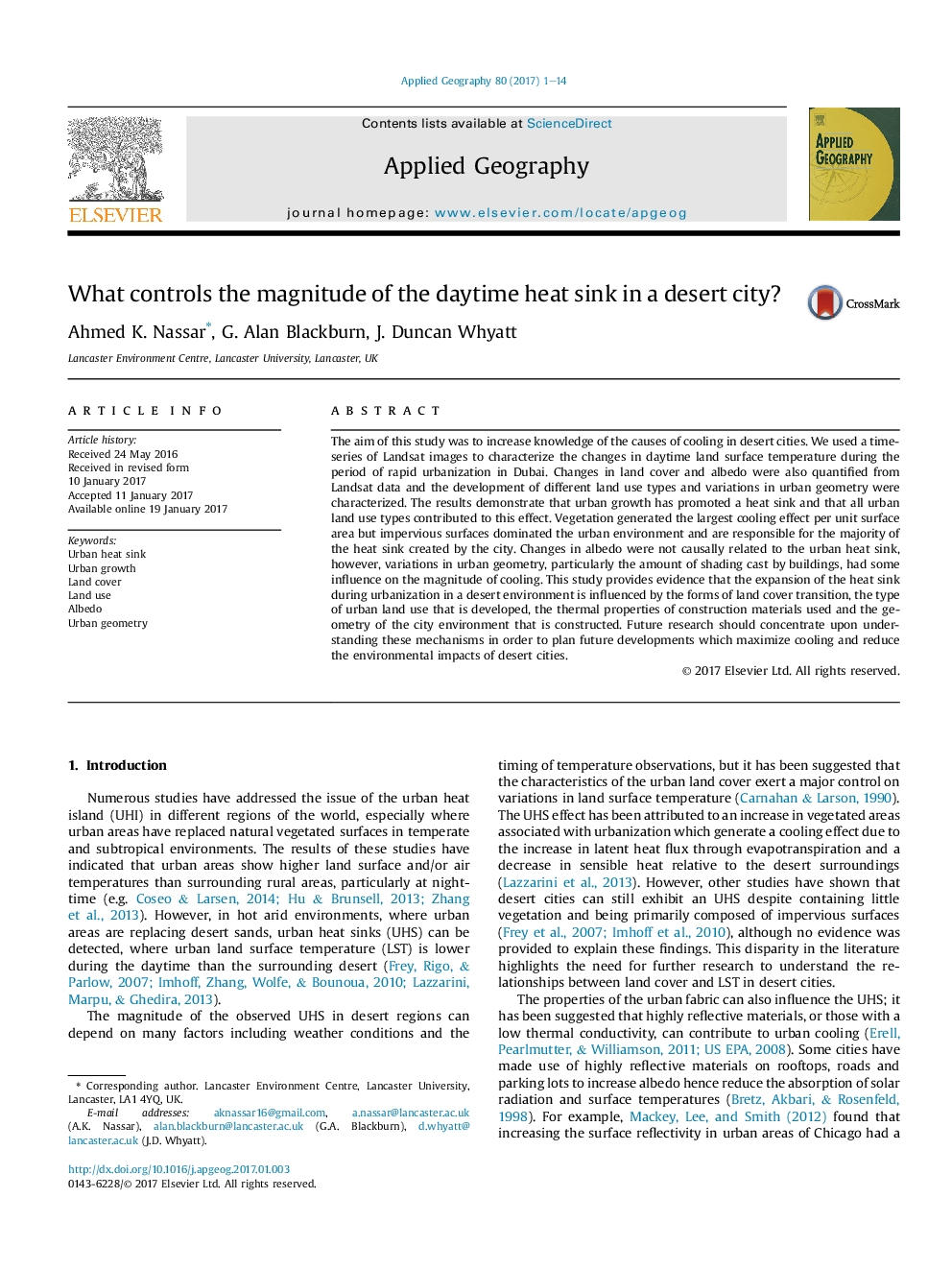| کد مقاله | کد نشریه | سال انتشار | مقاله انگلیسی | نسخه تمام متن |
|---|---|---|---|---|
| 6458407 | 1421037 | 2017 | 14 صفحه PDF | دانلود رایگان |
- We demonstrate how growth of a desert city promotes a daytime heat sink (cooling).
- Differential cooling is associated with development of different land use types.
- Impervious surfaces are the main urban land cover and generate majority of cooling.
- Changes in satellite-measured albedo not causally related to urban cooling.
- Urban geometry exerts strong control on magnitude of heat sink.
The aim of this study was to increase knowledge of the causes of cooling in desert cities. We used a time-series of Landsat images to characterize the changes in daytime land surface temperature during the period of rapid urbanization in Dubai. Changes in land cover and albedo were also quantified from Landsat data and the development of different land use types and variations in urban geometry were characterized. The results demonstrate that urban growth has promoted a heat sink and that all urban land use types contributed to this effect. Vegetation generated the largest cooling effect per unit surface area but impervious surfaces dominated the urban environment and are responsible for the majority of the heat sink created by the city. Changes in albedo were not causally related to the urban heat sink, however, variations in urban geometry, particularly the amount of shading cast by buildings, had some influence on the magnitude of cooling. This study provides evidence that the expansion of the heat sink during urbanization in a desert environment is influenced by the forms of land cover transition, the type of urban land use that is developed, the thermal properties of construction materials used and the geometry of the city environment that is constructed. Future research should concentrate upon understanding these mechanisms in order to plan future developments which maximize cooling and reduce the environmental impacts of desert cities.
Journal: Applied Geography - Volume 80, March 2017, Pages 1-14
